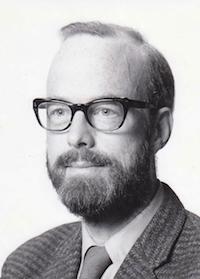Early Foundations: Algorithms and Language Development (1961-1966)
The earliest period reveals a strong emphasis on establishing the foundational elements of computing. In 1961, the focus was distinctly on core algorithms, with titles like "Algorithm 63: partition," "Algorithm 64: Quicksort," and "Algorithm 65: find" demonstrating a practical drive to define and implement fundamental computational procedures for common tasks such as sorting and searching. This indicates an initial phase where the very building blocks of efficient computation were being formalized and shared. By 1966, the scope broadened slightly, as seen with "A contribution to the development of ALGOL," suggesting a natural progression from individual algorithms to the programming languages necessary to express and organize them. This marked a shift towards the standardization and evolution of tools for software development, laying the groundwork for more complex systems.
The Pursuit of Program Correctness (1969-1971)
A notable shift emerged towards a more rigorous, mathematical approach to programming. The year 1969 introduced "An Axiomatic Basis for Computer Programming," signaling a profound move from mere implementation to the theoretical foundations of program correctness. This marked a desire to treat software development with the same logical precision as mathematics, aiming for provably correct programs. This theoretical pursuit quickly found practical application, as evidenced by "Proof of a Program: FIND" in 1971. This title directly demonstrates the application of the newly proposed axiomatic methods to a previously established algorithm ("find" from 1961), highlighting a continuity in the core problems being addressed, but a significant shift in the methodology used to ensure their reliability and correctness.
Structuring Complex Systems and Continued Efficiency (1974-1978)
This period reflects a dual focus: grappling with the complexities of concurrent operations and maintaining an interest in algorithmic efficiency. In 1974, "Monitors: An Operating System Structuring Concept" showcased an expansion of concerns to managing parallel execution and structuring larger, more complex software systems like operating systems. This represented a major step towards addressing the challenges of resource sharing and synchronization in multi-tasking environments. While the primary focus moved towards system architecture, the continued pursuit of efficiency is seen in "Matrix Reduction - An Efficient Method" from 1975, indicating that optimizing specific algorithms, perhaps for specialized numerical or data processing tasks, remained a relevant area of research. By 1978, the development of concurrent programming further matured with "Communicating Sequential Processes," which offered another powerful paradigm for designing and reasoning about parallel computations, reinforcing the earlier move towards robust system structuring.
Reflection, Critique, and Consolidation (1981-1987)
The early 1980s saw a period of self-reflection and critical analysis within the field, alongside a consolidation of established principles. "The Emperor's Old Clothes" in 1981, a widely recognized critique of the state of software engineering, indicated a willingness to question prevailing practices and theoretical assumptions. This critical lens was further applied in 1982 with "A Critique of the Foundations of Hoare Style Programming Logics," which specifically examined the very formal methods that had gained prominence in the previous decade. Interestingly, 1983 saw reprints of two foundational papers: "Communicating Sequential Processes (Reprint)" and "An Axiomatic Basis for Computer Programming (Reprint)." This suggests that despite the critiques, these seminal works were recognized for their lasting importance and continued relevance. The period culminated in "Laws of Programming" in 1987, pointing towards an ongoing effort to define a more comprehensive and perhaps unified set of principles governing program design and behavior, building upon the earlier formal methods while incorporating lessons from critical assessment.
Historical Perspective and Legacy (2002-2009)
The most recent period in the provided data shifts entirely from active technical development to historical reflection and the acknowledgement of legacy. In 2002, "In memoriam: Edsger W. Dijkstra 1930-2002" marked the passing of a seminal figure, highlighting the field's recognition of its pioneers. By 2009, this historical perspective deepened, with titles like "Viewpoint - Retrospective: an axiomatic basis for computer programming" and "Interview - An interview with C.A.R. Hoare." These titles explicitly demonstrate a move towards looking back at the foundational works and the individuals who shaped the discipline. The retrospective on the "axiomatic basis" directly links back to the crucial 1969 paper, indicating a mature field re-evaluating and appreciating the enduring impact of its early theoretical breakthroughs, and doing so through direct engagement with its living architects.

